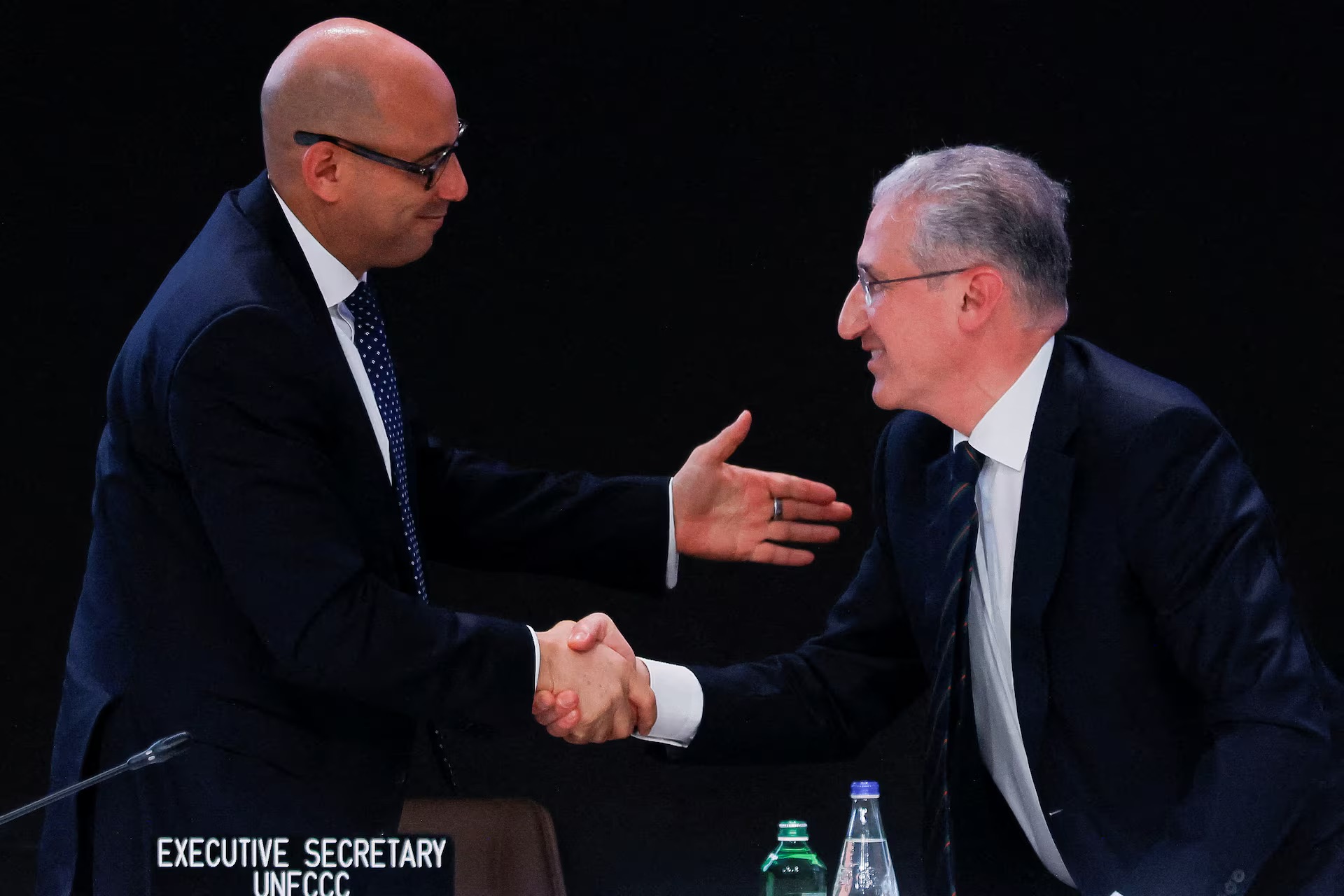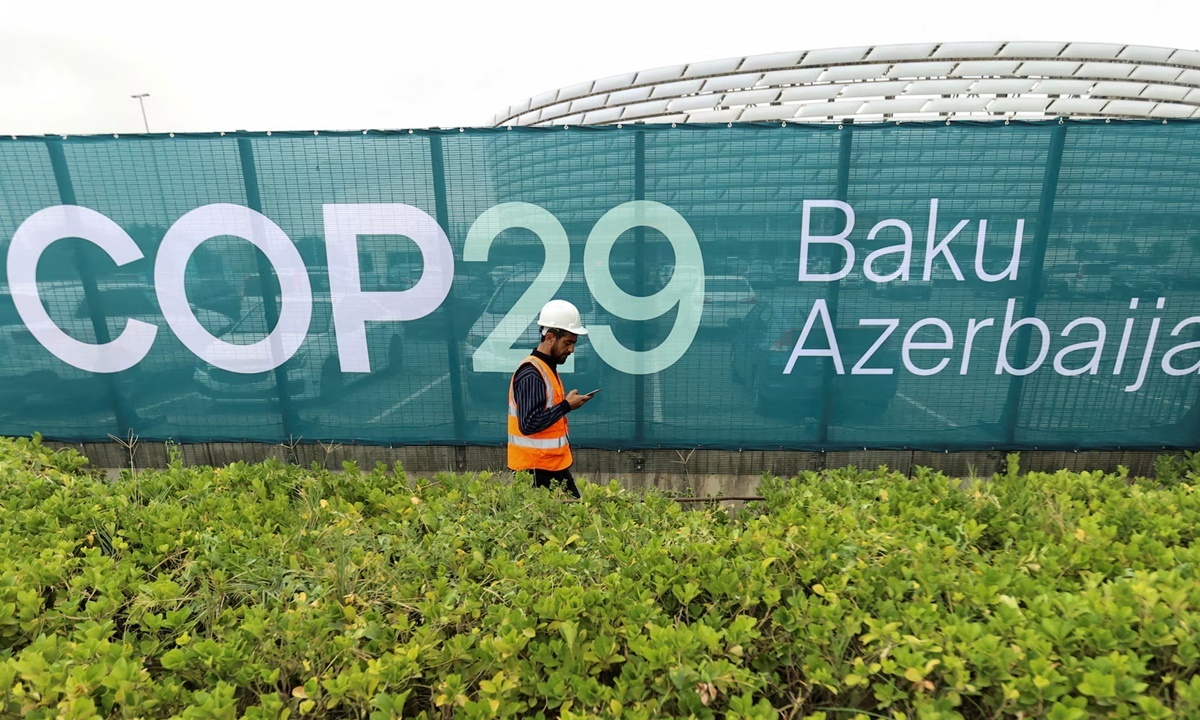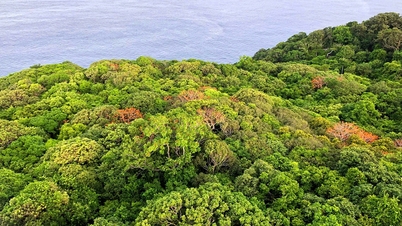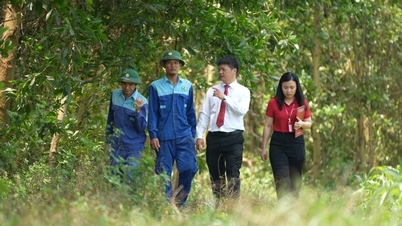(CLO) On Saturday at the COP29 conference on climate change, countries reached an agreement on setting up regulations for a global market to buy and sell carbon credits.
Proponents say the market would raise billions of dollars to fund new projects that could help tackle global warming.

COP29 President Mukhtar Babayev and Simon Stiell, Executive Secretary of the UNFCCC, shake hands at the COP29 conference, in Baku, Azerbaijan on November 23, 2024. Photo: REUTERS
Agreement after a decade of negotiations
The agreement comes after nearly a decade of international discussions on how to create a carbon credit market. The focus of the negotiations was on ensuring transparency and credibility so that the market could actually lead to reductions in greenhouse gas emissions – the main cause of climate change.
Carbon credits are created through projects such as planting forests or building wind farms in poor countries. These projects receive one credit for every ton of emissions they reduce or absorb from the atmosphere. Countries and businesses can buy these credits to help them meet their climate goals.
Two credit trading systems
At the conference, the parties agreed to allow the implementation of a central trading system managed by the United Nations, which could begin operating as early as next year. At the same time, countries also discussed details of a bilateral system that would allow direct credit trading between countries.

A fence surrounds the Baku Olympic Stadium, the venue for the COP29 United Nations climate change summit, in Baku, Azerbaijan. Photo: Reuters
Issues to be addressed include how to design credit tracking systems, the level of transparency in information sharing between countries, and what to do when projects fail to meet their targets.
The European Union (EU) has called for closer UN oversight and greater transparency in deals, while the US wants countries to have more autonomy in setting up their own deals.
The final compromise
The initial draft of COP29 allowed some countries to create carbon credits through their own registries. The final agreement was a compromise: the EU guaranteed a free registry for countries that could not afford to set up their own systems, while the US assured that recording a transaction in the system would not mean the credit was certified by the UN.
“The international trading system is still viable… although some would argue it is not robust enough,” said Pedro Barata, an observer at the nonprofit Environmental Defense Fund.
Development potential and challenges
While the focus of COP29 was to strengthen the global carbon credit market, bilateral trading began in January this year, when Switzerland purchased credits from Thailand. Dozens of countries have now signed similar agreements, but the volume of trade remains limited.
Establishing clear rules that ensure transparency and integrity without restricting the participation of countries is expected to promote stronger trading development.
According to the International Carbon Credit Trading Association (IETA), the UN-backed carbon credit market could be worth $250 billion a year by 2030, offsetting an additional 5 billion tonnes of carbon emissions annually.
The future of carbon markets
The COP29 agreement marks a significant step forward in building a global emissions reduction regime. However, effective implementation depends on countries’ commitment to implementing the rules and ensuring transparency, especially as bilateral deals become more common.
With its huge financial potential and ability to contribute to climate protection, the carbon credit market is expected to become an important tool in the fight against climate change.
Cao Phong (according to Reuters)
Source: https://www.congluan.vn/cop29-thi-truong-mua-ban-tin-chi-carbon-toan-cau-se-hoat-dong-nhu-the-nao-post322642.html



![[Photo] Keep your warehouse safe in all situations](https://vphoto.vietnam.vn/thumb/1200x675/vietnam/resource/IMAGE/2025/10/1/3eb4eceafe68497989865e7faa4e4d0e)

![[Photo] Hanoi morning of October 1: Prolonged flooding, people wade to work](https://vphoto.vietnam.vn/thumb/1200x675/vietnam/resource/IMAGE/2025/10/1/189be28938e3493fa26b2938efa2059e)
![[Photo] President of the Cuban National Assembly visits President Ho Chi Minh's Mausoleum](https://vphoto.vietnam.vn/thumb/1200x675/vietnam/resource/IMAGE/2025/10/1/39f1142310fc4dae9e3de4fcc9ac2ed0)




























































































Comment (0)